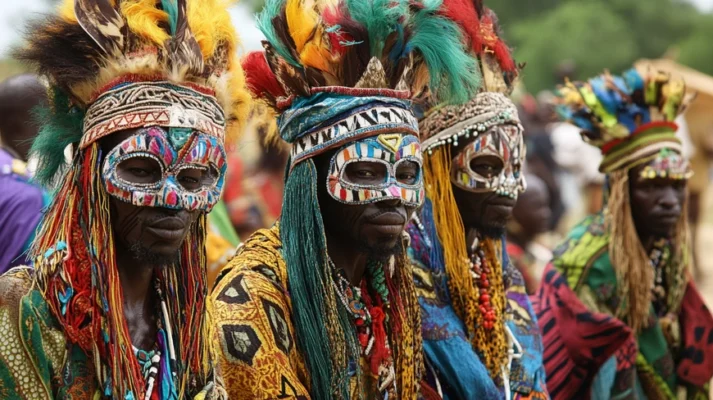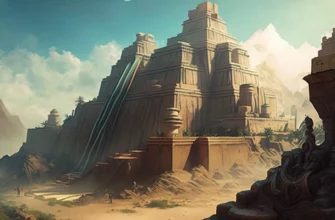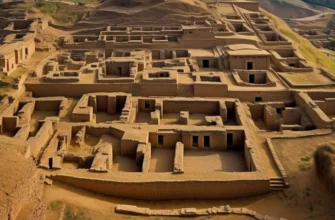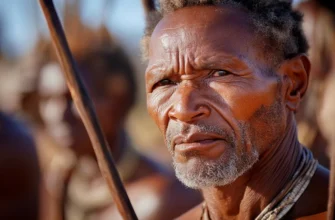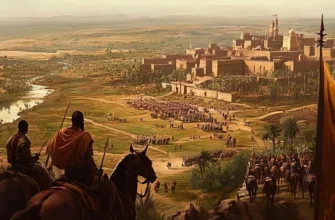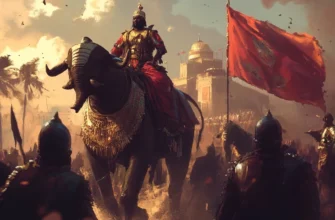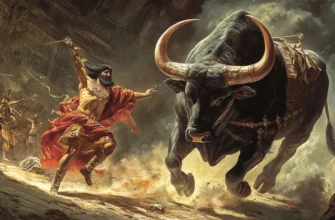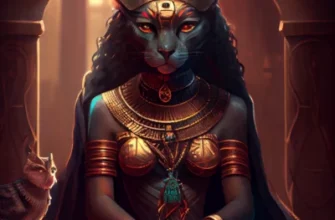The Kanuri are a people living in West Africa, mainly in Nigeria, Chad, Niger, and Cameroon. They are descendants of the powerful Kanem-Born Empire, which existed from the 9th to the 19th century and played a key role in trans-Saharan trade. The Kanuri speak Nilo-Saharan languages, including Kanuri and its dialects. Most members of this ethnic group are Muslims and preserve traditional customs, among which rituals, dances, and music occupy a special place. Traditionally, the Kanuri were engaged in agriculture, animal husbandry, and trade. Their towns and villages are known for their markets, handicrafts, and unique architecture. Today, the Kanuri people continue to preserve their cultural identity despite challenges such as socio-economic difficulties and political instability in the region. They remain an important ethnic group that plays a significant role in the life of West Africa.
History of the Kanuri people
The Kanuri people have a long and rich history closely linked to the Kanem-Born Empire, one of the most powerful states in West Africa.
The Kanuri are descended from peoples who inhabited the region around Lake Chad as early as the first centuries AD. They formed the core population of the Kanem Empire, which emerged around the 8th-9th centuries and became a center of political and commercial power.
In the 11th century, Kanem reached its peak under the Seifu dynasty, which converted to Islam and established ties with Arab traders. In the 13th century, due to internal conflicts and external pressure, the capital of the empire was moved from Kanem to Bornu, giving rise to a new state — Bornu. For several centuries, Kanem-Bornu controlled large territories, traded actively, and maintained close ties with North African countries.
In the 19th century, the empire weakened due to attacks from neighbouring peoples and internal conflicts. In 1893, it was conquered by the army of Rabih al-Zubayr and later came under the control of the colonial powers of Britain, France and Germany. After the African countries gained independence in the 20th century, the Kanuri people remained divided between Nigeria, Chad, Niger, and Cameroon, while retaining their cultural and ethnic identity.
Origin and early history
The Kanuri people are descended from ancient peoples who inhabited the region around Lake Chad as early as the first centuries AD. They formed the main population of the Kanem Empire, which emerged around the 8th-9th centuries. Kanem was located in the Sudan-Sahel zone, which facilitated the development of agriculture, animal husbandry, and trade.
The Kanuri are descendants of the ruling elite of the Kanem Empire, which was originally inhabited by nomadic Zagawa tribes. Over time, these tribes assimilated with the local Nilo-Saharan peoples, forming a unique ethnic group. Kanem quickly became a powerful state that controlled the caravan routes between North Africa and the savannas south of the Sahara.
In the 11th century, the Seifu dynasty, which ruled Kanem, converted to Islam, which contributed to the development of international trade and the strengthening of political ties with Arab states. This contributed to the expansion of Kanem’s territory, its economic growth, and the formation of an empire that for a long time became one of the most powerful in the region.
The Kanem-Born Empire
The Kanem-Born Empire was one of the most powerful states in West and Central Africa, existing from the 9th to the 19th century. It emerged as a continuation of the early Kanem state, located in the area of modern Chad, and later expanded its power to the territory of modern Nigeria, Niger, Cameroon, and Libya.
The heyday of Kanem
In the 9th-13th centuries, the Kanem Empire reached its peak under the Seifu dynasty, which converted to Islam in the 11th century. This helped strengthen ties with North Africa and develop trans-Saharan trade. Kanem controlled the caravan routes linking North Africa with the savannas of Sudan, facilitating trade in gold, salt, slaves, and textiles.
The transition to Bornu
In the 14th century, internal conflicts and pressure from nomadic peoples weakened Kanem, and the rulers were forced to move the capital west to the Bornu region (in present-day Nigeria). There, a new capital, Ngazargamu, was founded, and the empire was renamed Kanem-Bornu.
The Golden Age of Bornu
Kanem-Bornu reached its peak in the 16th-17th centuries under the rule of Mai Ali Ghadji (1497–1515) and Idris Al-Alauma (1571–1603). During this period, the state carried out successful military campaigns, controlled vast territories, and strengthened Islam as the state religion. Diplomatic contacts were established with the Ottoman Empire and Egypt, which helped to modernize the army and administration.
Decline and fall of the empire
From the 18th century, the empire began to weaken due to internal conflicts, corruption, and attacks by neighboring peoples. In 1893, the last remnants of the state were conquered by the troops of Rabih al-Zubayr, and the territory subsequently fell under the control of European colonizers.
Despite the fall of the empire, the Kanuri people have retained their cultural identity, and the traditions and language that developed during the Kanem-Bornu period still have a significant influence in the West African region.
Culture and traditions
The Kanuri people have a rich cultural heritage shaped by the Kanem-Born Empire and Islam. They speak the Kanuri language, which has several dialects, and preserve traditional customs. Most Kanuri are Muslim, which is an important part of their daily life, but some ancient beliefs have also been preserved. Traditional clothing includes loose tunics and turbans for men and long dresses with jewelry for women. The people’s art is represented by weaving, pottery, and jewelry making. Wedding ceremonies, music, and dance play an important role in their lives, and the Durbar horse parade remains one of the most colorful traditions. The Kanuri’s favorite dishes include millet porridge, soups, and rice dishes. Despite modern influences, they continue to preserve their cultural identity.
Language and dialects
The Kanuri people speak the Kanuri language, which belongs to the Nilo-Saharan language family. It has several main dialects, the most common of which are Yeruva, Manga, and Tumava. The Yeruva dialect is the most widespread and is spoken mainly in Nigeria, while Manga is spoken in Chad and Niger.
Due to historical contacts and their colonial past, many Kanuri also speak Hausa, Arabic, French, and English. The influence of Arabic is particularly noticeable in religious vocabulary, as Islam plays an important role in their lives.
The Kanuri language has its own written tradition, which originally used the Arabic script but is now mostly written in Latin. Despite external influences, the Kanuri actively maintain their linguistic heritage through oral tradition, folklore, music, and literature.
Religion and beliefs
Most of the Kanuri people are Sunni Muslims, which became the dominant religion in the 11th century under the influence of North Africa. Islam plays a key role in the daily life of the Kanuri, determining social norms, rituals, and holidays. Mosques and Islamic schools (madrasas) are centres of spiritual education, and Muslim holidays such as Eid al-Fitr and Eid al-Adha are widely celebrated.
Despite the spread of Islam, elements of traditional beliefs, particularly animism, have been preserved in Kanuri culture. Some communities continue to practice ancient rituals associated with nature spirits and ancestors. Folk medicine, which includes the use of herbs, incantations, and amulets, also remains an important part of spiritual culture.
Thus, the religious life of the Kanuri combines Islamic traditions and ancient beliefs, creating a unique cultural synthesis.
Traditional clothing and art
The traditional clothing of the Kanuri people is characterized by bright colors and intricate patterns. Men usually wear a babaan riga, a long, wide tunic with embroidery, complemented by a turban or kufi headdress. Women wear zanni, long, colorful dresses decorated with embroidery, and wrap their heads with a shawl or scarf. Jewelry made of silver, beads, and leather is an important element of women’s attire.
The art of Kanuri has deep historical roots and is manifested in various crafts. They are famous for their weaving, in particular the production of fabrics with traditional geometric patterns. Pottery remains a popular craft, especially among women, who make clay pots decorated with carved patterns. Leather goods such as bags, sandals, and belts also have a long tradition and are popular in the region.
Kanuri architecture is characterized by unique mud-brick structures, including traditional huts with conical roofs and large urban complexes such as the ancient city of Ngazargamu. The art and traditional clothing of the Kanuri are important elements of their cultural identity, which has been preserved to this day.
Customs and rituals
The customs and rituals of the Kanuri people are closely linked to their history, Islamic traditions, and ancient beliefs. Weddings are one of the most important rituals, accompanied by several days of celebrations, music, dancing, and rituals of gift exchange between the families of the bride and groom.
During the ceremony, the bride is often decorated with henna paintings, symbolizing prosperity and protection from evil forces.
The initiation rite, in particular the circumcision of boys, is an important tradition marking the transition to adulthood. It is accompanied by religious prayers and celebrations within the family.
A special place in Kanuri customs is occupied by the Durbar horse parade, which dates back to the Kanem-Bornu Empire. It is held during major Islamic holidays and state events, when horsemen in traditional dress demonstrate military maneuvers and strength.
Funeral rites in Kanuri also have their own characteristics, combining Islamic traditions with elements of folk beliefs. After death, prayers are said, and the relatives of the deceased receive guests for several days, who bring gifts and express their condolences.
All these customs and rituals are an important part of the Kanuri way of life, passed down from generation to generation and strengthening their cultural identity.
Conclusion
Kanuri – a people in Western Africa played an important role in the history of West Africa, creating the powerful Kanem-Born Empire, which for centuries was a center of political, military, and economic power. They controlled trans-Saharan trade, spread Islam, and promoted cultural exchange between the peoples of Africa and the Middle East.
Their contribution to the development of statehood, crafts, and trade has left a significant mark on the region. Despite modern changes, the Kanuri continue to preserve their cultural heritage through language, traditions, crafts, and religious rituals. Folklore, music, art, and traditional clothing remain an integral part of their identity.
Oral tradition plays an important role in preserving the culture, passing down the history of the people from generation to generation.
The Kanuri are a symbol of resilience and identity in the modern world. They continue to live in their historic lands, preserving the unique traditions that have shaped their community for centuries.
